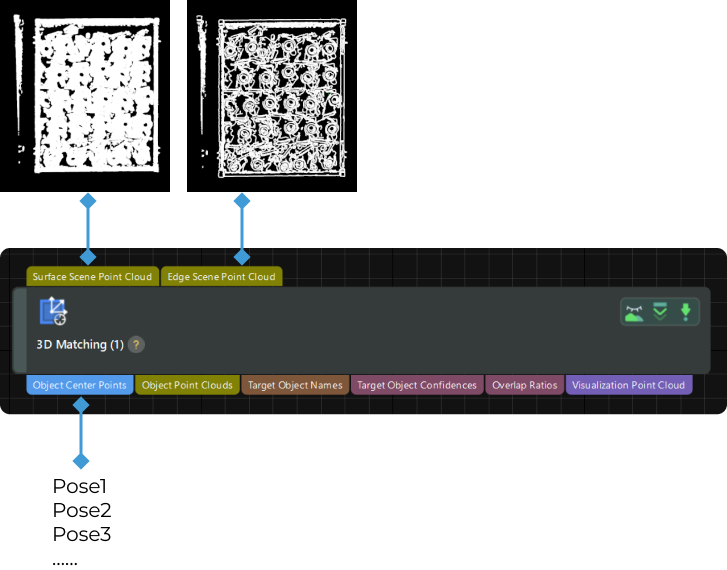3D Matching
Function
This Step matches the point cloud model of the target object with the original point cloud, removes poses of overlapped and coinciding objects, and outputs accurate poses of the target objects.
Usage Scenario
This Step is suitable for most scenarios requiring coarse and fine matching for poses of the same type of objects.
When using this Step, you can refer to “FAQs on 3D Matching” to learn how to handle common issues during 3D matching.
Parameters
Model Settings
- Model Selection
-
Description: This parameter is used to select a point cloud model in the target object editor.
Instruction: Click the Target object editor button to open the target object editor. Once a configured point cloud model is saved in the target object editor, you can select it from the drop-down list below the button.
Parameter Tuning Level
- Parameter Tuning Level
-
Description: This parameter is used to assign levels to parameters so that users with different requirements see different parameters. You can follow to the content below to select the appropriate parameter tuning level.
Value list: Basic, Advanced, Expert
Default value: Basic
Guidelines for Selecting Parameter Tuning Levels
The following provides guidance on selecting parameter tuning levels. You can choose the appropriate level based on your application scenario.
Basic Level
This level is suitable for scenarios such as quick deployment and initial configuration. The basic level displays commonly used key parameters, such as matching mode and output type. When the target object features are clear and the point cloud quality is good, the basic tuning level is usually sufficient to meet matching requirements. For detailed parameters, see Basic Tuning Level Parameter Description.
Advanced Level
This level is suitable for scenarios such as performance optimization, accuracy improvement, and stability enhancement. The advanced level provides more adjustable parameters, such as the performance modes for coarse and fine matching, adjustment or filtering of coarse matching poses, and removal of coinciding and overlapped poses. It is ideal for handling cases with severe occlusion or multiple stacked objects, which can improve matching stability and reduce the probability of false positives or missed detections. For detailed parameters, see Advanced Tuning Level Parameter Description.
Expert Level
This level is suitable for deep tuning, troubleshooting abnormal issues, and customized matching requirements. The expert level displays all adjustable parameters, including algorithm-level control options (e.g., voting settings, pose verification settings). It is designed for technical personnel with a certain level of algorithm understanding. This level is often used to handle complex or unstable matching scenarios, such as reflective or randomly stacked objects. Usually used by Mech-MindTechnical Support or other experienced technicians. For detailed parameters, see Expert Tuning Level Parameter Description.
